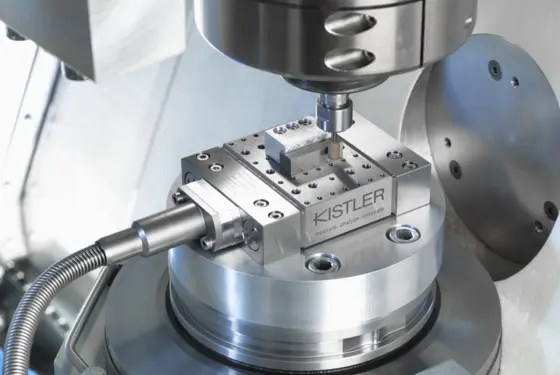How to measure cutting forces
Cutting forces in machining processes can be measured with different technologies, among which dynamometers are the most effective and reliable ones. Some dynamometers are based on the piezoelectric effect. However, integrated monitoring solutions can also be customized by using suitable force sensors or strain sensors. There are three main kinds of piezoelectric dynamometers for measuring cutting forces: stationary 3-component dynamometers, stationary 6-component dynamometers, and rotating 4-component dynamometers.
Why do we measure cutting forces? What are cutting forces measured for?
Metal-cutting is still the most important machining process. It provides the basis for technical products of all kinds. Manufactured products are expected to offer convincing quality and they must be cost-effective. Thus, there has been a constant increase in the requirements to be met by cutting processes. Detailed knowledge of cutting processes is essential in order to meet these requirements. Key indicators include the acting forces and moments.
During cutting processes, the tools undergo high mechanical, thermal, and chemical stress making an impact on cutting performance and tool wear (see Fig. 2 below). Particularly when developing new tools, it is crucial to know how they behave – typical questions being: What cutting forces occur? How does the tool behave in different situations (process stability)? How can the tool be designed so that force peaks are avoided (service life) and the machining process still takes place quickly and efficiently?
Only accurate measurements during the development ensure the achievement of process reliability and prevention of rejects. For example, when milling a case, a watchmaker needs to ensure that the process runs smoothly and is stable, even in constantly changing engagement conditions, and that the tool is not overstressed.
One increasing possibility is to utilize force/moment measurements in advanced programming in CNC machines to build up intelligent machining strategies. The force signals can be connected to the machines via different options and are being used to improve processes, to increase traceability, and to ensure sustainable machining operations.
Therefore, the analysis of tool wear, i.e. measuring and analyzing the mechanical load of the tool, is the foundation for:
- Improving cutting processes,
- Improving cutting tools (geometry, coating)
- Improving auxiliary equipment (such as coolants)
- Dimension machine structures and components
- Comparing and optimizing machining strategies
- Verifying process models and simulations
- Performing intelligent programming by means of integrating the measurand force into the machine control system
This is done through:
- Measuring and analyzing forces applied in plastomechanic processes
- Detecting characteristic constants, i.e. specific forces relevant for machinability
- Providing information about the energy induced into a process
- Utilizing advanced programming commandos such as synchronous actions in NC (numeric control)
Piezoelectric dynamometers are widely applied in academic and industrial research and development to measure, analyze, and optimize machining processes.









